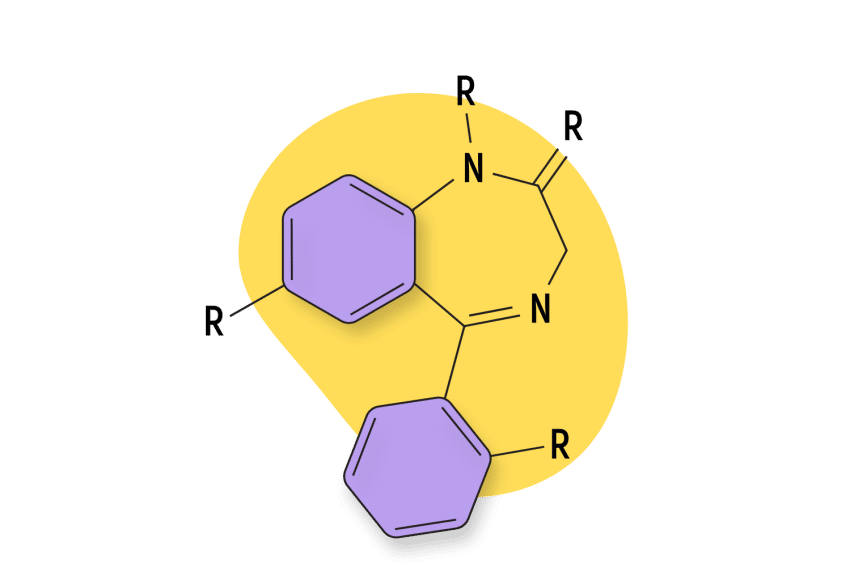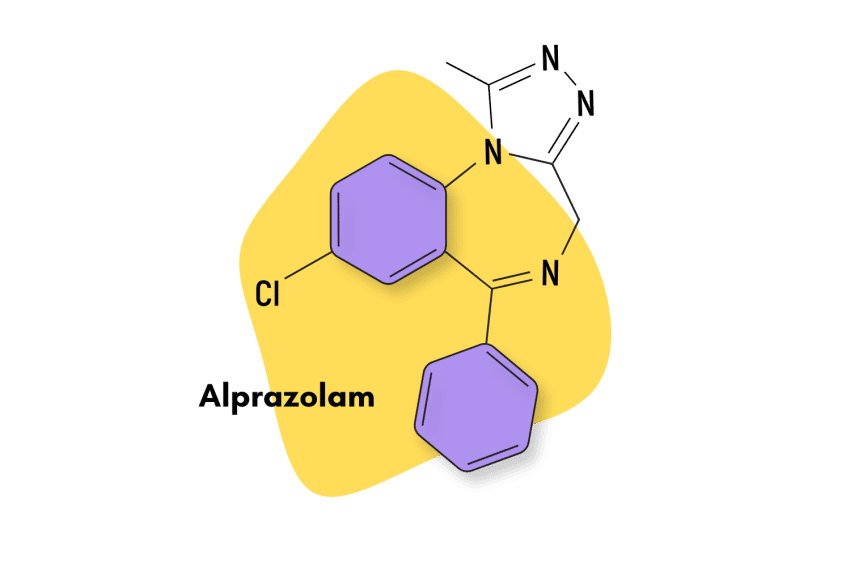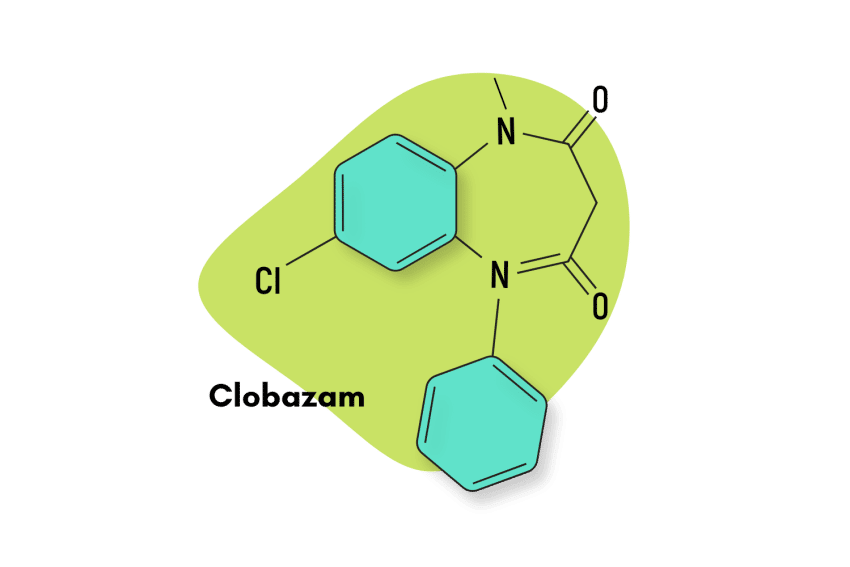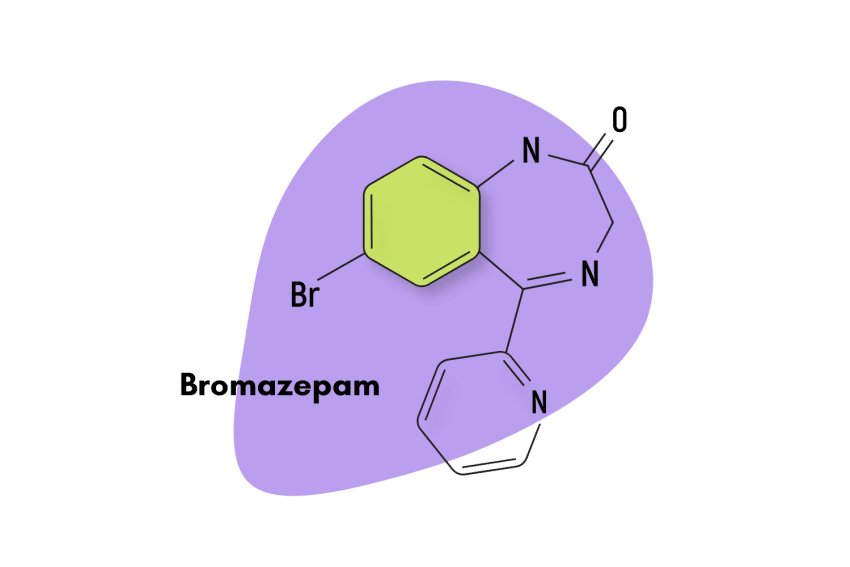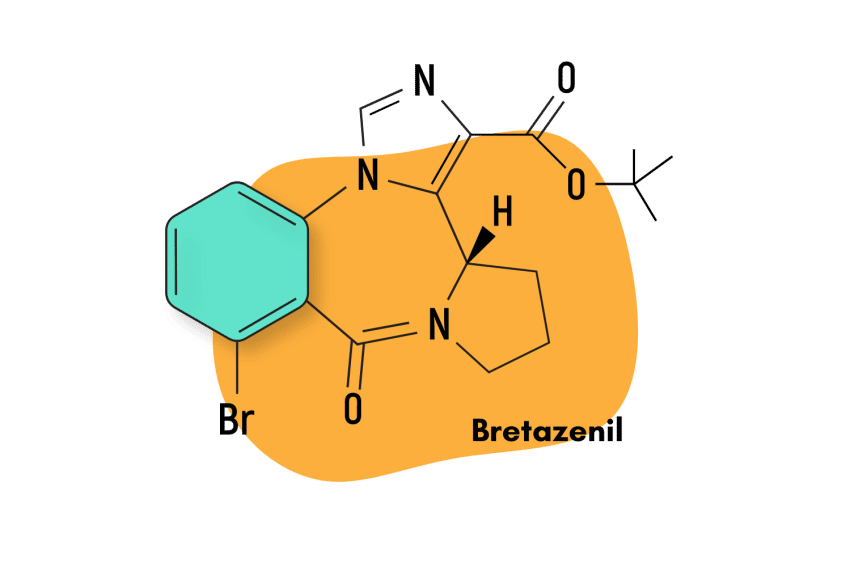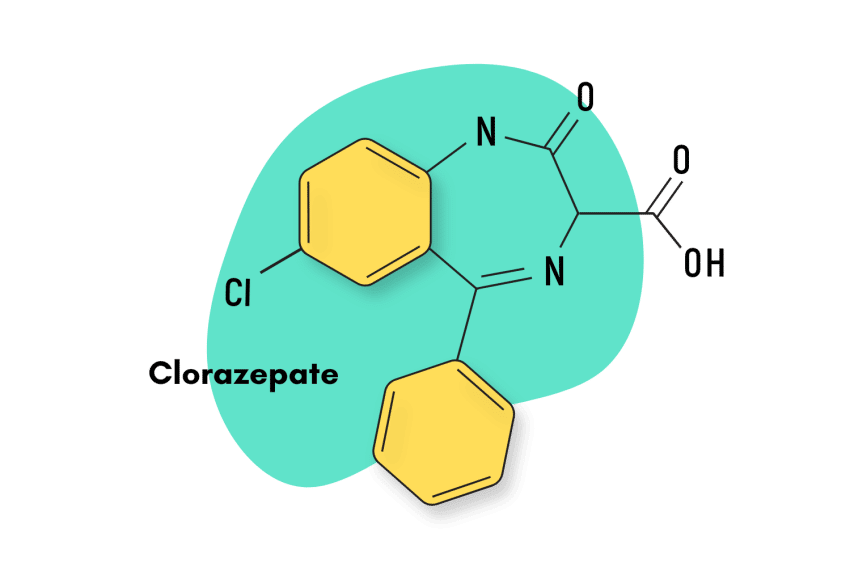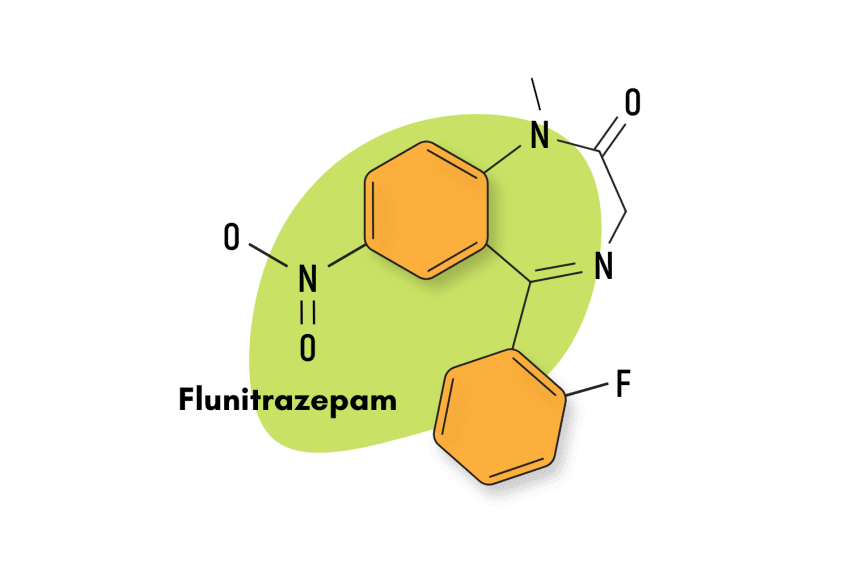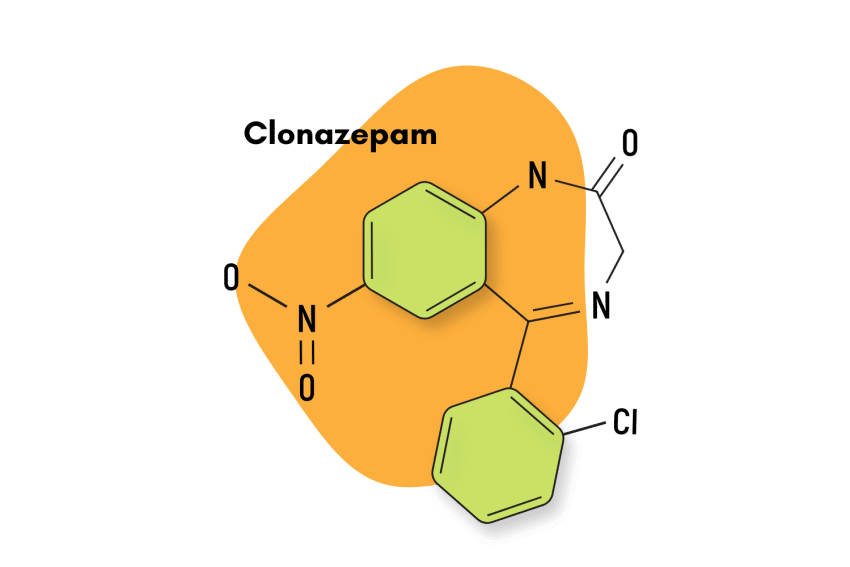Climazolam (Climasol) Fact Sheet & Harm Reduction Guide
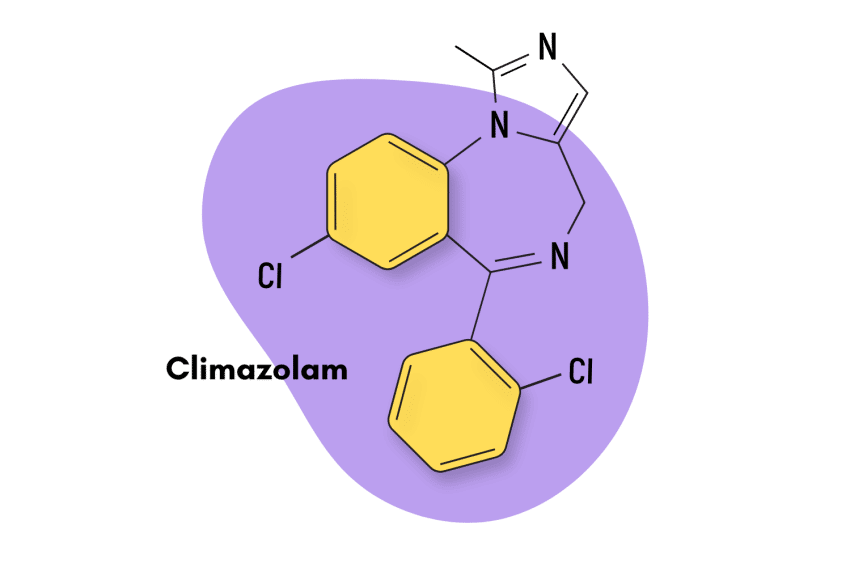
Climazolam, sold under the trade name Climasol and manufactured by Gräub, the Swiss pharmaceutical company, is a benzodiazepine drug belonging to the imidazobenzodiazepine subclass.
Climazolam is used as an anesthetic agent in veterinary medicine. This is the same way other closely-related benzodiazepines such as midazolam and remimazolam are used too.
Some users take climazolam recreationally due to the drug’s exceptionally high potency.
Climazolam Specs
| Status | Approved Veterinary Medication |
| Common Dosage | Unspecified |
| PubChem ID | 68790 |
| CAS# | 59467-77-5 |
IUPAC Name: 8-chloro-6-(2-chlorophenyl)-1-methyl-4H-imidazo[1,5-a][1,4]benzodiazepine
Other Names: Climasol
Metabolism: Unspecified
Duration of Effects: Unknown

Benzodiazepine Dosage Equivalency Calculator
**Caution:** Benzodiazepines have a narrow therapeutic window. Dose equivalents may not be accurate in higher doses.
This calculator does not substitute for clinical experience and is meant to serve only as a reference for determining oral benzodiazepine equivalence.
Please consult a medical practitioner before taking benzodiazepines.
How Does Climazolam Work?
Climazolam belongs to a novel benzodiazepine subclass, but its potent sedative effects are still the result of its interactions with GABA receptors. This would entail that climazolam exerts its pharmacological effects through the “classic” GABA-mediated pathway.
GABA receptors are the body’s primary inhibitory neurotransmitters. Benzodiazepines work to potentiate GABAs natural effects. They do this primarily through an allosteric effect that causes neurons in the brain and central nervous system to become hyperpolarized and thus less likely to fire off an action potential, the body’s electrical signals to communicate.
The reduced likelihood for action potentials means that there is an overall reduction in neuronal activity. In other words, you could say benzodiazepines “slow down” the brain and central nervous system. This basic mechanism gives rise to the pharmacological properties associated with benzodiazepines. However, it’s essential to understand that while most benzodiazepines utilize GABA mediation as their primary pathway, there are still meaningful differences in how they go about this. These differences have significant effects on their pharmacology.
In terms of pharmacokinetics, climazolam is reported as having a very quick onset of action and, concerning potency, appears to enjoy a relatively strong capability to induce anesthetic effects [2]. Climazolam is also water-soluble and can form a miscible solution with other agents, such as the neuroleptanalgesic combination fentanyl-fluanisone or ketamine, which it is frequently used in combination with. These combinations are often used because they provide excellent muscular relaxation and are a safer alternative to barbiturates.
Rat studies have determined that increased climazolam dosage will extend the duration of action but will not increase the level of sedation [2], which might contribute to a safer overall profile. Additionally, climazolam is similar in structure to midazolam and diclazepam, and its muscle-relaxant properties are comparable to those of diazepam and midazolam [2].
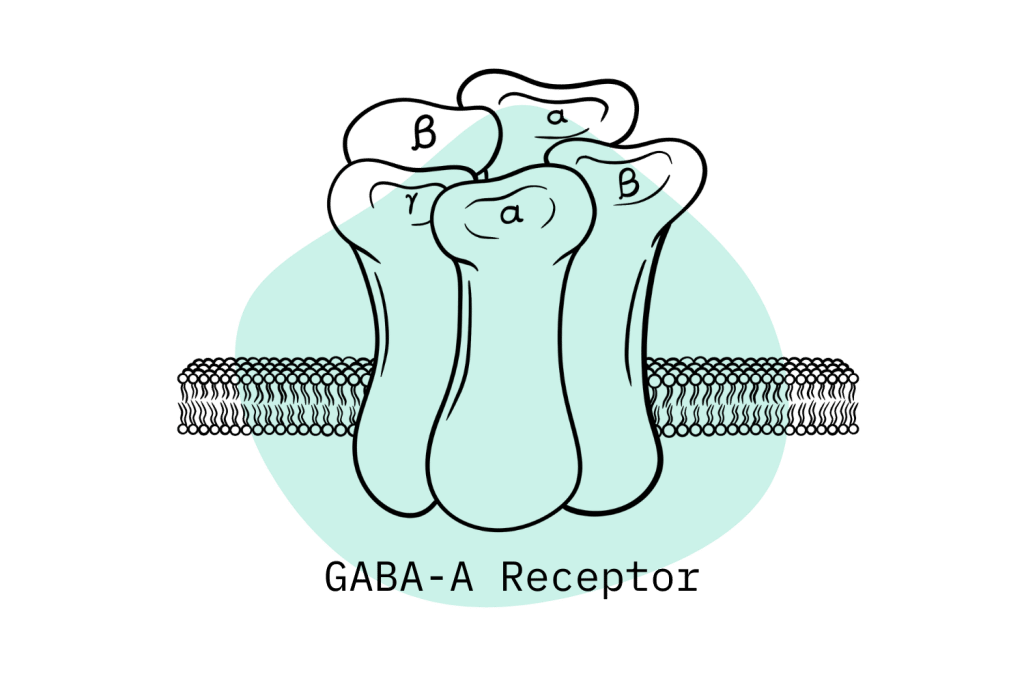
What Are Imidazobenzodiazepines?
Structurally, imidazobenzodiazepines are a polycyclic heterocycle whose structure contains an imidazole fused with a benzodiazepine.
These compounds display unique pharmacology because they can act as both agonists and inverse agonists to specific GABA-A receptors [1].
Is Climazolam Safe? Risks & Side Effects
Because they utilize the exact primary mechanism of action, most benzodiazepines share a baseline risk level, with only relatively small differences between them. This is why virtually all benzodiazepines approved for the market share the same Schedule IV classification under the Controlled Substances Act.
Usually, the more dangerous benzodiazepines are full agonists with high potency and a short duration of action. These properties are more conducive to dependence-forming habits, tend to induce more side effects, and have more of a risk of causing severe respiratory depression.
However, there are certain risk factors present in long-acting benzodiazepines as opposed to short-acting, like the potential for accumulation in the body. These sorts of differences are what one must consider when assessing the individual risk level in a given benzodiazepine compound.
Regarding climazolam, it is reasonable to assume that this benzodiazepine carries a significantly high relative risk level, although it is hard to make definitive conclusions. Since climazolam was never approved for human use, there are almost no meaningful studies to turn to, but the fact that it wasn’t approved already tells us much.
We know that climazolam has a potent sedative action, which would entail significant risks. Sedative action implies more risks than other benzodiazepine-related effects.

Side Effects of Climazolam
Rat studies evaluating the performance of climazolam found that it exhibited limited toxicity and practically no adverse effects [2]. Other studies have also concluded that, in combination with ketamine, climazolam has little-to-no effect on the cardiorespiratory system in adult horses [3]. Furthermore, climazolam’s potency means that it can be injected in low doses, and this is helpful when there is a need to combine it with other agents to produce the desired effects [2].
In general, the conclusion of climazolam seems to be that it has a generally well-tolerated side effects profile as a veterinary compound.
Benzodiazepine Withdrawal & Dependence
No meaningful studies are looking at climazolam tolerance and dependence in animals. As an anesthetic agent, it is not used in a day-to-day manner and, as such, does not pose a significant threat of engendering dependence.
However, as a potent benzodiazepine that uses the traditional GABA-mediated pathway, it is, of course, reasonable to assume that climazolam, as most other benzodiazepines, does have the capacity to cause dependence and the associated withdrawal symptoms.

Harm Reduction: Climazolam
Climazolam isn’t a popular designer benzodiazepine (DBZD). Still, it is sold on some designer drug markets or street-level dealers as an alternative to drugs like Xanax (alprazolam), Valium (diazepam), and Klonopin (clonazepam).
The key to harm reduction strategies with benzodiazepines like climazolam is to use them in moderation and to avoid mixing them with other central nervous system depressants (including alcohol, GHB, opiates, and other benzodiazepines).
Benzodiazepine Harm Reduction Tips:
- 🥣 Don’t mix — Mixing benzodiazepines with other depressants (alcohol, GHB, phenibut, barbiturates, opiates) can be fatal.
- ⏳ Take frequent breaks or plan for a short treatment span — Benzodiazepines can form dependence quickly, so it’s important to stop using the drug periodically.
- 🥄 Always stick to the proper dose — The dosage of benzos can vary substantially. Some drugs require 20 or 30 mg; others can be fatal in doses as low as 3 mg.
- 💊 Be aware of contraindications — Benzodiazepines are significantly more dangerous in older people or those with certain medical conditions.
- 🧪 Test your drugs — If ordering benzos from unregistered vendors (online or street vendors), order a benzo test kit to ensure your pills contain what you think they do.
- 💉 Never snort or inject benzos — Not only does this provide no advantage, but it’s also extremely dangerous. Benzos should be taken orally.
- 🌧 Recognize the signs of addiction — Early warning signs are feeling like you’re not “yourself” without the drug or hiding your habits from loved ones.
- ⚖️ Understand the laws where you live — In most parts of the world, benzodiazepines are only considered legal if given a prescription by a medical doctor.
- 📞 Know where to go if you need help — Help is available for benzodiazepine addiction; you just have to ask for it. Look up “addiction hotline” for more information where you live. (USA: 1-800-662-4357; Canada: 1-866-585-0445; UK: 0300-999-1212).
Climazolam Drug Interactions
Regarding drug interactions, recreational users should avoid all concomitant use of powerful pharmacological drugs. Still, the most deadly combination that should always be avoided is mixing compounds that can depress the central nervous system (CNS).
This combination can easily lead to severe respiratory depression, the leading cause of death among drug overdoses.

Climazolam Contraindications
Benzodiazepines all share a common set of contraindications. Since climazolam does not have clinical uses in humans, these would only apply to recreational users.
It’s wise to avoid benzodiazepine use if you have any of the following health conditions:
- Bronchitis
- Chronic obstructive pulmonary disease (COPD)
- Conjunctive use of barbiturates, opiates, or those suffering from alcoholism
- Intellectual disabilities due to frequent paradoxical reactions
- Major depression
- Myasthenia gravis
- Over the age of 65 (high risk)
- Personality disorders
- Sleep apnea
Similar Benzodiazepines
Climazolam is part of a group of imidazobenzodiazepines that is known for their strong sedative potential. Other compounds in this class include:
Midazolam
Midazolam is another short-acting benzo with strong sedative potential and high potency. However, unlike climazolam, this drug is an approved medication, although it is highly regulated due to its dangerous nature. Midazolam has certain particularities like its strong amnesic qualities and the fact that although it strongly sedates patients, it does not make them go unconscious.
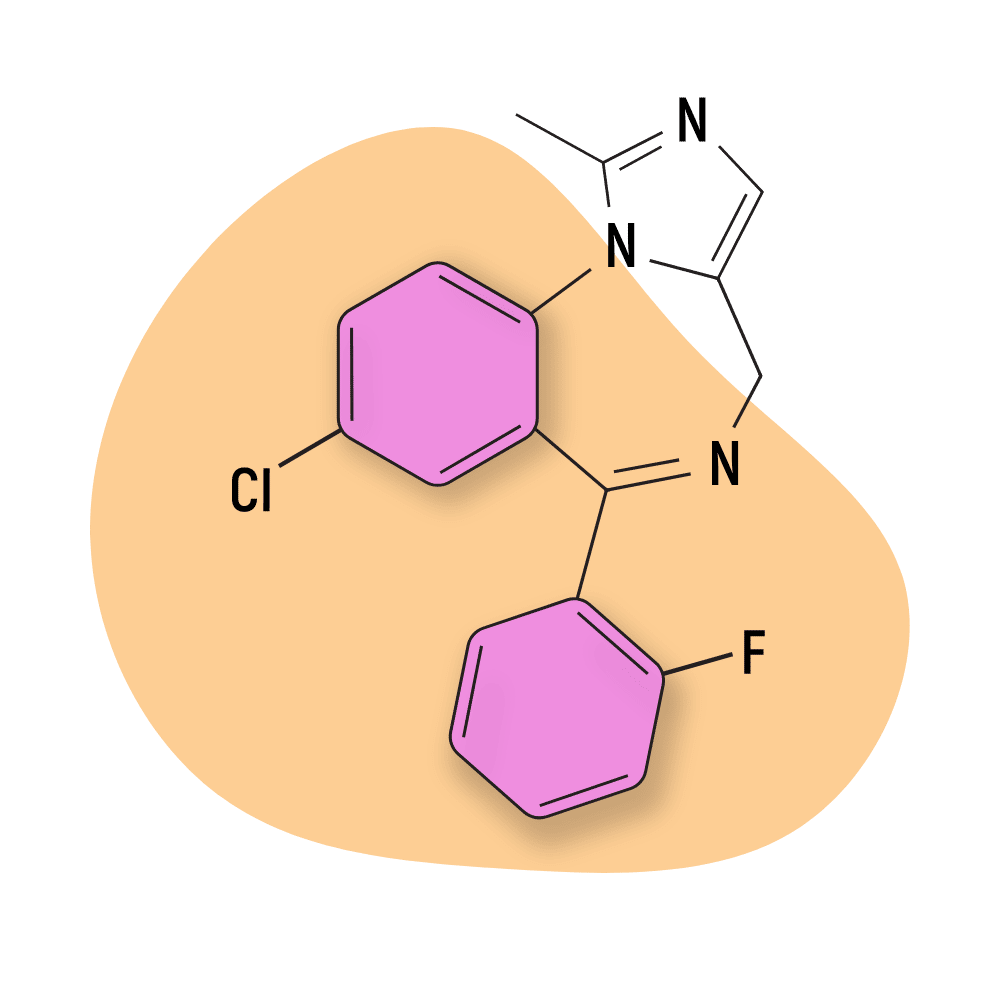
Remimazolam
Remimazolam displays comparable qualities to midazolam. However, slight pharmacokinetic differences mean it is sometimes used as a shorter-acting alternative. It has a faster onset and wears off faster than midazolam.
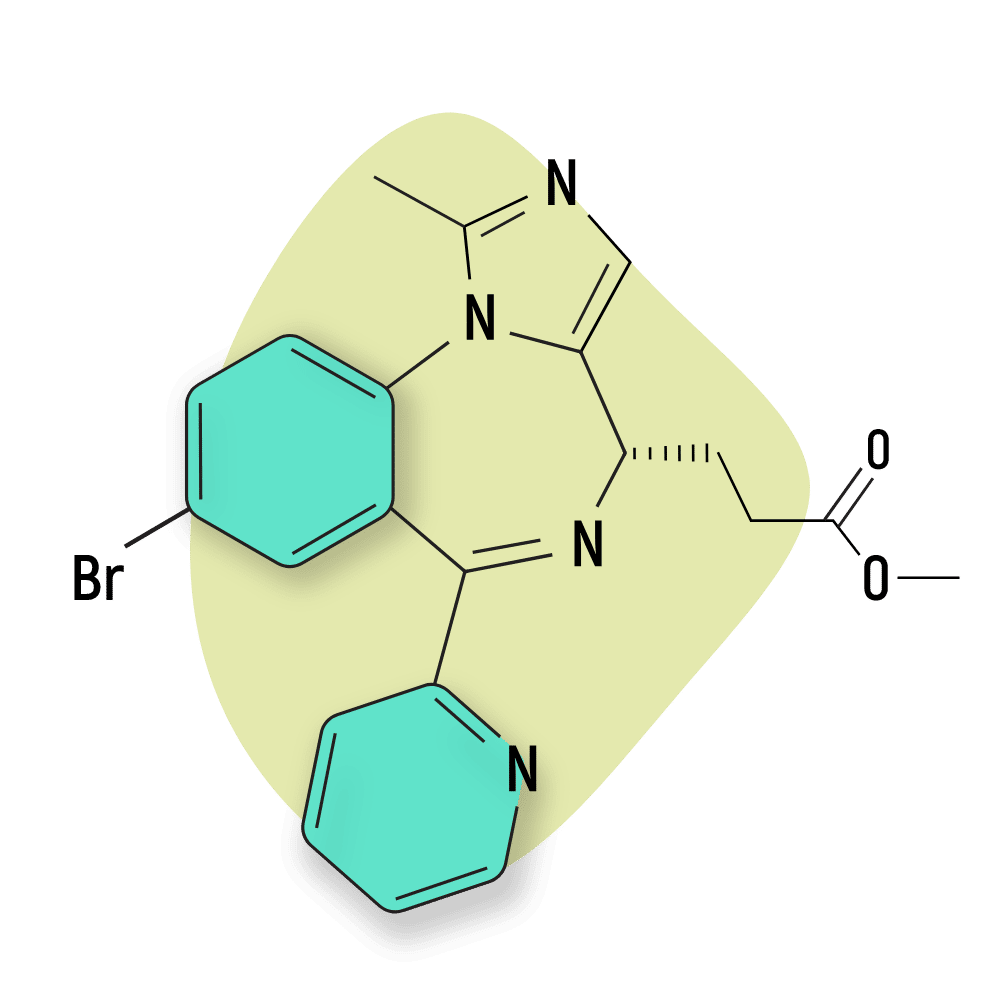
Natural Alternatives to Benzodiazepines
Did you know there are plenty of natural alternatives to prescription benzodiazepines? Consider replacing your benzo with one of these compounds.
L-Theanine
L-Theanine is an amino acid that can be found in species of green and black tea (Camellia sinensis) and has proven anxiolytic and sedative properties [4].
L-Theanine exerts its effects through two primary means: its ability to mediate both GABA and glutamate neurotransmitters. Its effects on GABA are comparable to benzodiazepines, although not the same. And when it comes to glutamate, which can be thought of as the excitatory neurotransmitter (as opposed to GABA, which is inhibitory), it exerts a binding effect that limits its potential.
However, it should be noted that L-Theanine is not as potent as pharmacological benzos.
Kava
The kava plant is a tropical plant species (Piper methysticum) that can also produce anxiolytic and sedative benefits [5]. Active ingredients in kava, known as kavalactones, interact with GABA receptors to produce benzodiazepine-like effects. And it can do this while providing a much safer side effects profile and a reduced risk of dependency!
However, when it comes to these natural alternatives, it should be noted that not all of the pharmacological properties of benzodiazepines can be replaced. For instance, neither L-Theanine nor kava can produce hypnotic or anti-convulsant effects.

Kratom
The tropical evergreen species known as kratom (Mitragyna speciosa) is a remarkable natural compound with many pharmacological benefits. However, kratom is hard to classify. Since it acts on the body’s opioid receptors, many choose to classify it as an opioid. But, on the other hand, the natural plant-like nature of kratom means others don’t view this as an accurate description.
In any case, kratom is well known for providing more benefits than most natural compounds. In low doses, it acts as both a stimulant and a euphoric, sort of like coffee (which is a distant cousin to the kratom plant). When kratom is taken in mid-to-high doses, though, it then begins to act as more of an anxiolytic and analgesic, becoming more and more sedative as the dosage is increased [6].
Kratom has received a lot of bad press because of its involvement in several overdose deaths. However, the coverage has mainly been misleading. Virtually all fatalities involving kratom also involve the presence of much more dangerous drugs like cocaine and heroin. When kratom is used by itself in responsible amounts, it is pretty safe. The thing is that, as it acts on the body’s opioid receptors to produce a depressive effect on the CNS, kratom. However, it’s a natural compound, and can still be extremely dangerous when combined with other CNS depressants.
Additionally, kratom does have a recognized potential to induce dependence and withdrawal symptoms, although to a lesser degree than pharmacological drugs. In terms of side effects, it is also much safer.

Climazolam FAQs
How is climazolam applied in a veterinary setting?
Climazolam is applied mainly through the use of intravenous administration.
What animals is climazolam used on?
Climazolam has been known to be used on cattle, swine, rodents, and dogs.
References
- Zhang, P., Zhang, W., Liu, R., Harris, B., Skolnick, P., & Cook, J. M. (1995). Synthesis of novel imidazobenzodiazepines as probes of the pharmacophore for” diazepam-insensitive” GABAA receptors. Journal of medicinal chemistry, 38(10), 1679-1688.
- West, C. D., & Green, C. J. (1987). The sedative effects of climazolam and climazolam with fentanyl–fluanisone in rats (Rattus norvegicus). Laboratory animals, 21(2), 143-148.
- Muir, W. W. (2009). Anxiolytics, nonopioid sedative-analgesics, and opioid analgesics. In Equine anesthesia (pp. 185-209). WB Saunders.
- Nathan, P. J., Lu, K., Gray, M., & Oliver, C. (2006). The neuropharmacology of L-theanine (N-ethyl-L-glutamine), a possible neuroprotective and cognitive enhancing agent. Journal of Herbal Pharmacotherapy, 6(2), 21-30.
- Pittler, M. H., & Ernst, E. (2003). Kava extract for treating anxiety. Cochrane Depression, Anxiety and Neurosis Group. Cochrane Database Syst Rev, 3.
- Eastlack, S. C., Cornett, E. M., & Kaye, A. D. (2020). Kratom—Pharmacology, clinical implications, and outlook: a comprehensive review. Pain and therapy, 9(1), 55-69.

